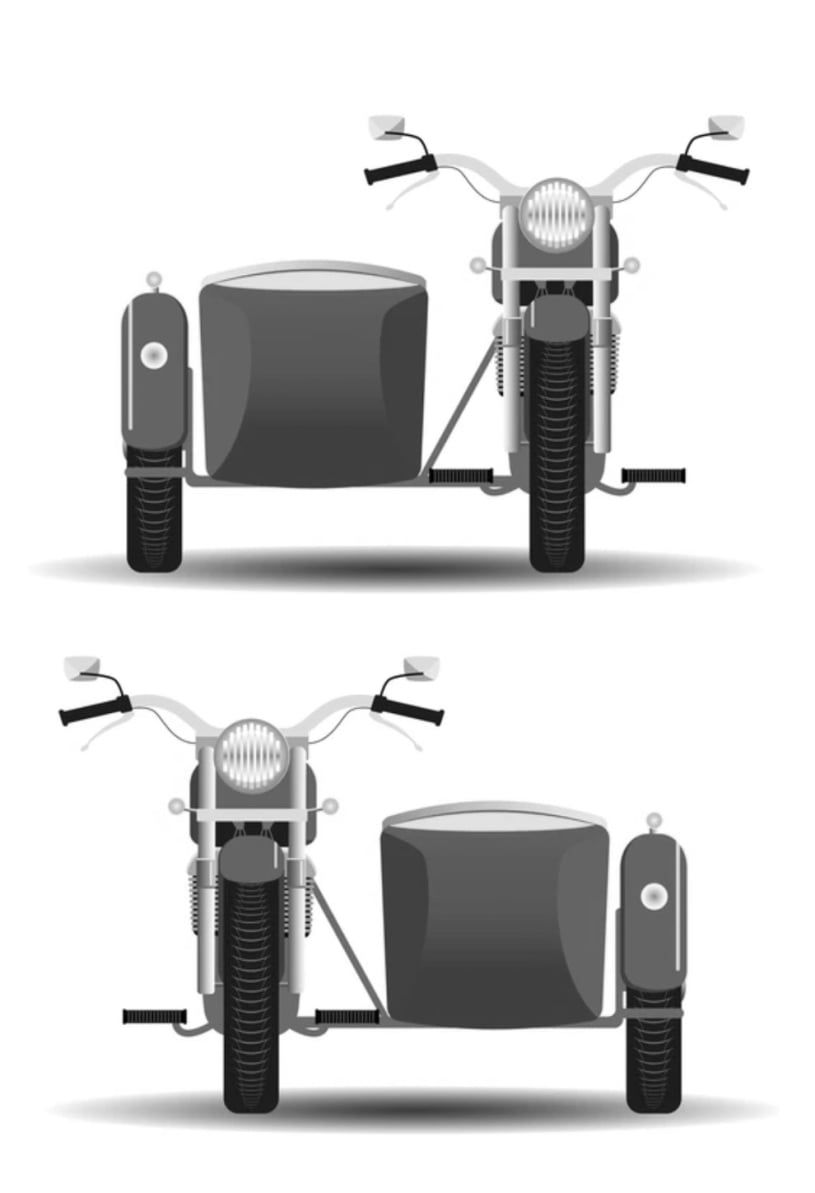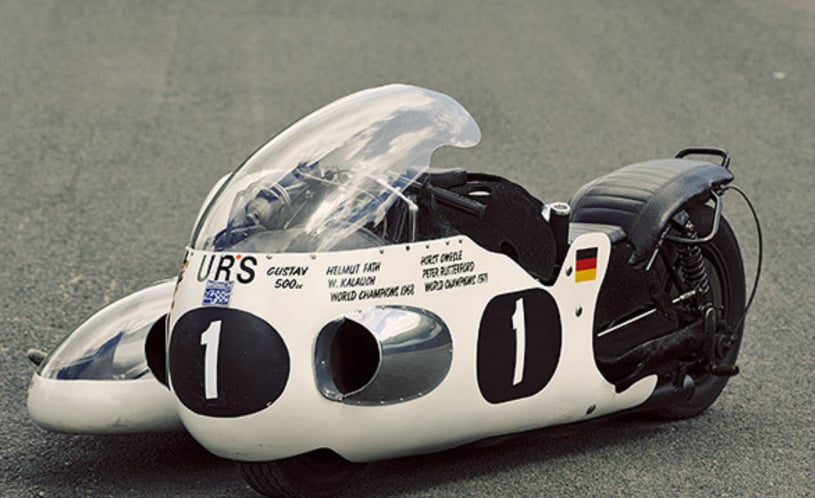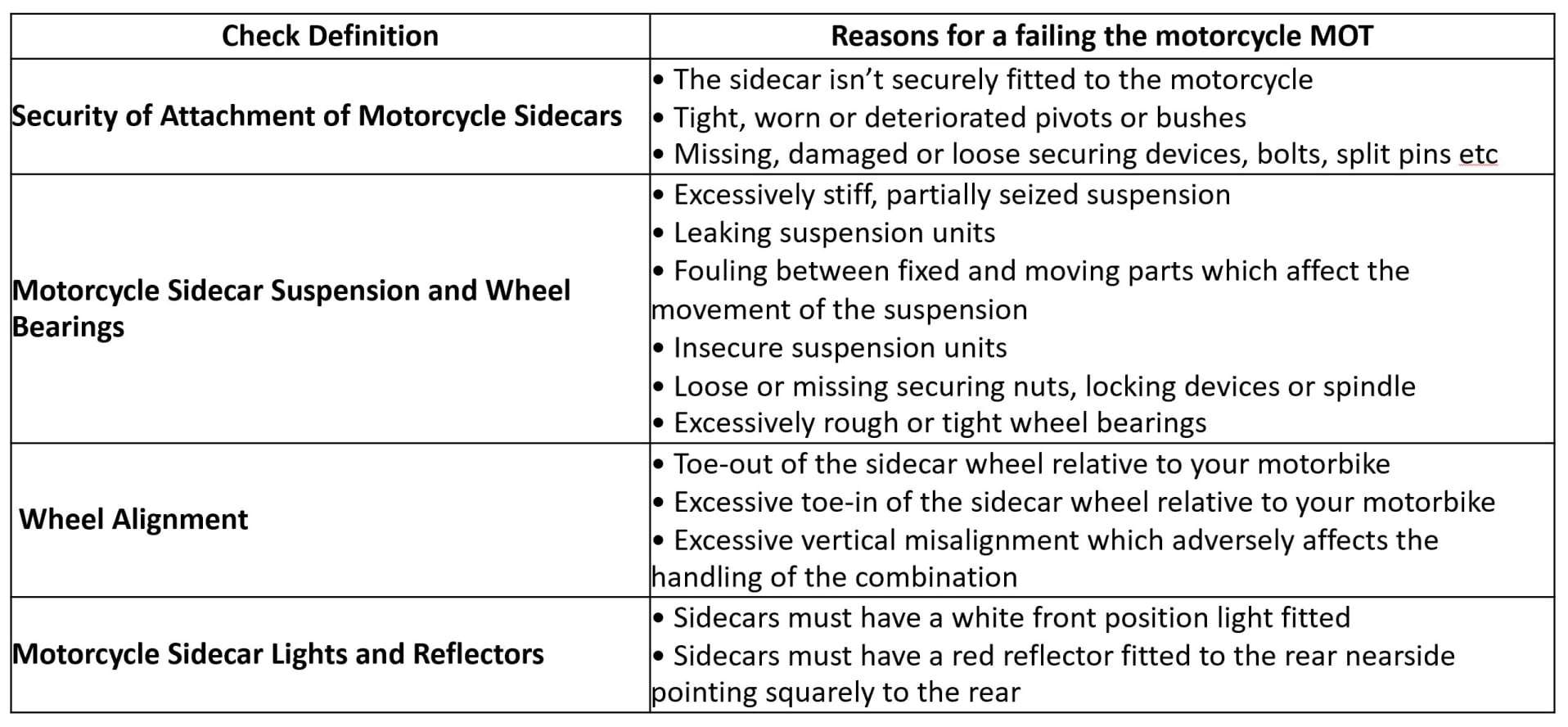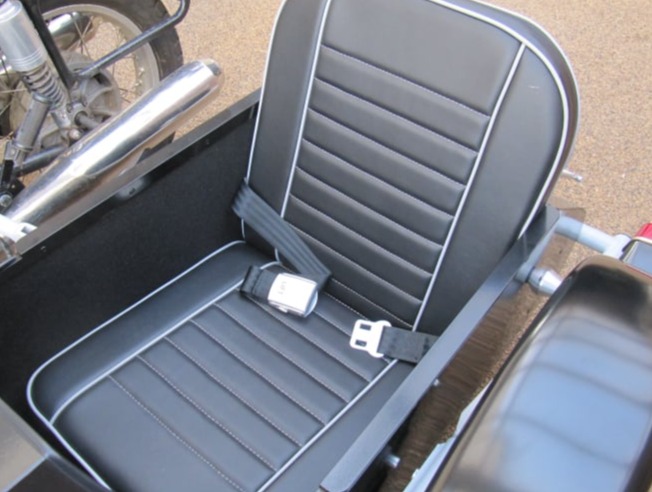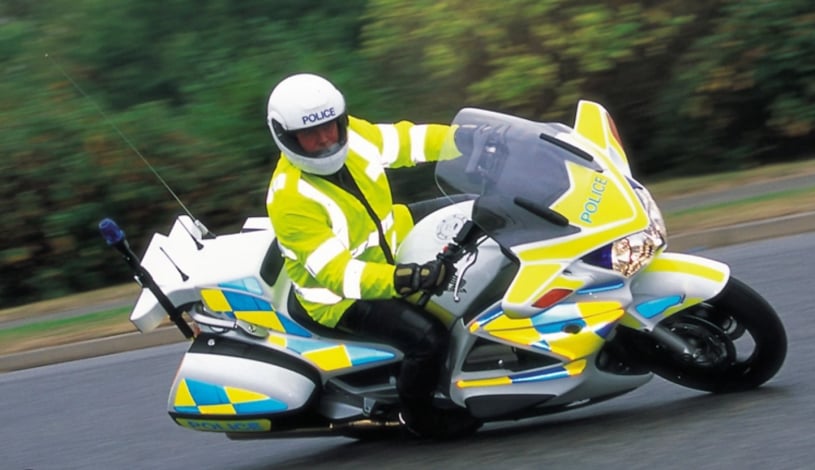
Sidecar Law in the U.K.
This page attempts to answer questions regarding making your own sidecar and the legal responsibilities of the owner in the UK. This information was gathered first hand by talking to the Driver Vehicle and Licensing Agency (DVLA), the Vehicle and operator Service Agency (VOSA), the Department for Transport and my insurance company.
However this information is provided as a guide only. It is not a definitive reference for sidecar law and is just an understanding. It was written in 2015 and revised in 2023.
(Image from MCN)
